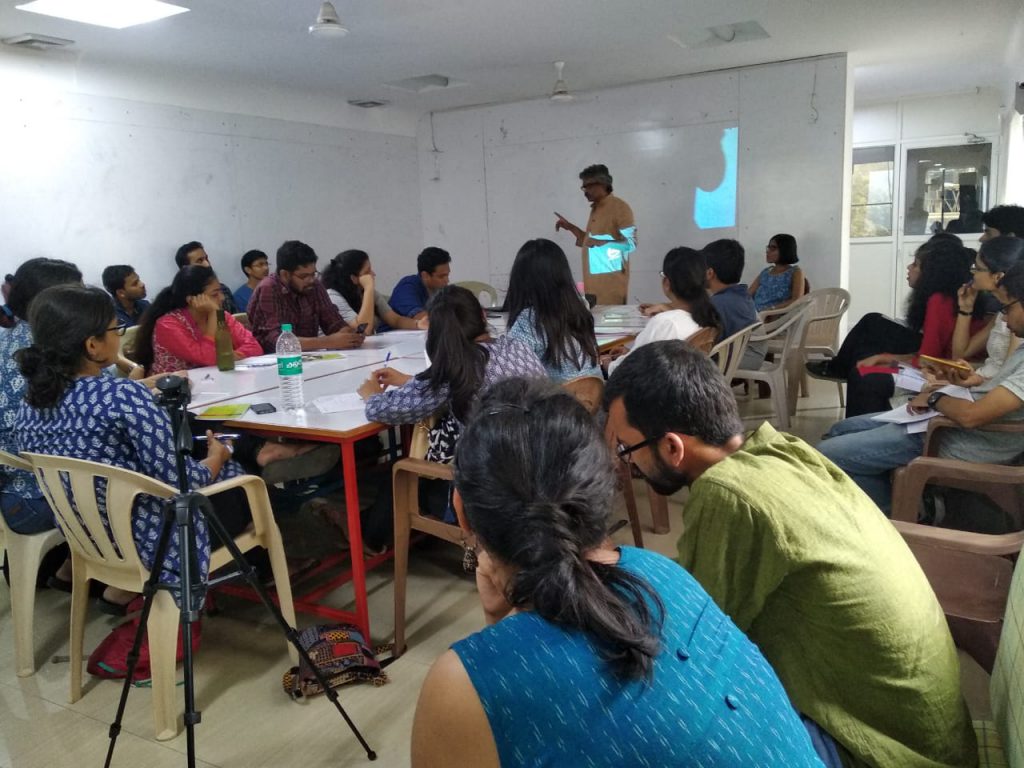What is the Winter Institute?

From 6th to 17th October 2018, the students of Masters in Urban Policy and Governance (MUPG) program at the School of Habitat Studies, TISS Mumbai, were in Hyderabad to understand how youth from marginalised localities in the city engage with work and the work sphere — how do they find and define decent work? What are their aspirations and perceptions of changing opportunities? Do they have access to work of their choice? Do have the required skills? Are they paid fair wages? What is the relationship between the spatial organisation of a neighbourhood, its geographic location in the city and the life chances of the youth, in terms of finding and sustaining work? The initiative was part of the Winter Institute, a full-fledged three credit course within MUPG. Winter Institute is conceived as a space for interdisciplinary and collaborative learning through research and action through field immersion. This year, the Winter Institute was held in collaboration with the Hyderabad Urban Lab (HUL), a Hyderabad-based research organization that studies the challenges of contemporary urbanization. Faculty from the Centre for Urban Policy and Governance and the staff of HUL were involved in conceptualizing the theme of the study and in narrowing down on field sites, resource persons and guiding students during their research. The students, faculty and HUL explored the theme of “Youth, Work and the City”. The driving question for the Winter Institute was to understand how do the youth from disadvantaged communities and socio-spatially marginalised localities in Hyderabad find work in the city.

In September 2018, before the students set off for Hyderabad, they went through a detailed orientation at Tata Institute of Social Sciences campus in Mumbai. This included workshops on theory and concepts, methods, policies, and writing blogs. Once in Hyderabad, they dove deep into the context and history of the city — they studied city’s planning and neighbourhood trajectories, work and identity in the neighbourhoods. Alongside guided field visits, methodological and conceptualisation debriefing discussions with the staff at HUL, students were exposed to a number of special lectures by community leaders, IT entrepreneur, IAS officers, trade union leader and academics. The students relied on neighbourhood mapping through transects, observations of work spaces and worker–employer relationships, structured in-depth interviews and focussed group discussions with different groups of youth and other stakeholders.
Through an ethnographic exploration of two distinct neighbourhoods in Hyderabad city – Ameerpeth and Mehdipatnam, students collectively explored the ways in which the youth (presumably with limited and inadequate educational qualifications or appropriate technical skills and lack of access to formal employment) inhabiting or working in these neighbourhoods experience the world of (informal and formal) work in a globalizing urban context marked by increasing levels of economic turmoil, uncertainty, and lack of secure and well-paying jobs.
“We as student researchers were expected to create an epistemological object of enquiry from something which concerns us directly. All of us fall directly in the youth category and will be looking for jobs after completion of our masters here at TISS,” Aadya Saxena, MUPG student, wrote in her report.
They focused on the following research questions:
1. What are the aspiration and perceptions of work that the youth have which shape their efforts in finding work in the city?
2. What are the opportunities and barriers for work available to the youth in these neighbourhoods? What kinds of socio-spatial restructuring are affecting these opportunities (closing some while opening new ones), and how is access to them structured?
3. How do the youth collectively and individually exert their agency and negotiate their access to work?
4. How are existing policies and institutional frameworks responding to the changing local economies, and to the demands of the emerging youth workforce?
The teams of students developed briefs for each of their sites and fine tuned their data collection techniques. “We learnt to question what we saw around us,” Devashree Ragde said in her report. For instance, if women are not visible in the workplace then how are they navigating the city? In addition to detailed field notes, observations and interview transcriptions, each team came up with innovative outputs that communicated their key findings to a wider audience. They developed maps, sketches, calendars, flip books that conveyed the issues that the students had identified on the ground.“I learnt that (research) insights don’t always translate well into brief summaries, research papers and powerpoint presentations. Moreover, to be able to convey the richness of the information to a wider audience, it is necessary that the findings from the field are presented in a lucid manner with the use of creative forms like infographics, GIFs, paintings, sketches, cartoons, podcasts, animations etc,” said Isha Fuletra in her report.
Over the next three months, we will publish blog posts written by students based on this exercise and their reflections upon specific facets that engaged them. Watch this space for more.



